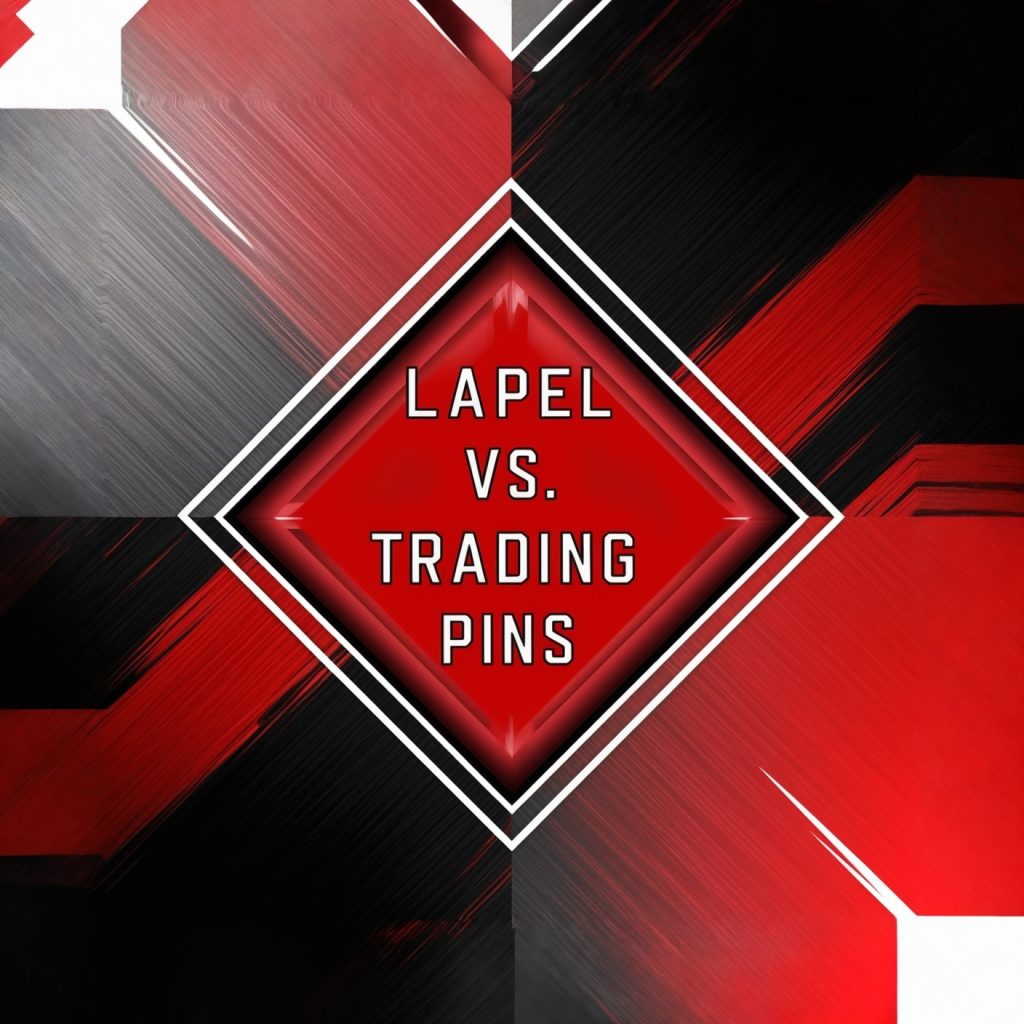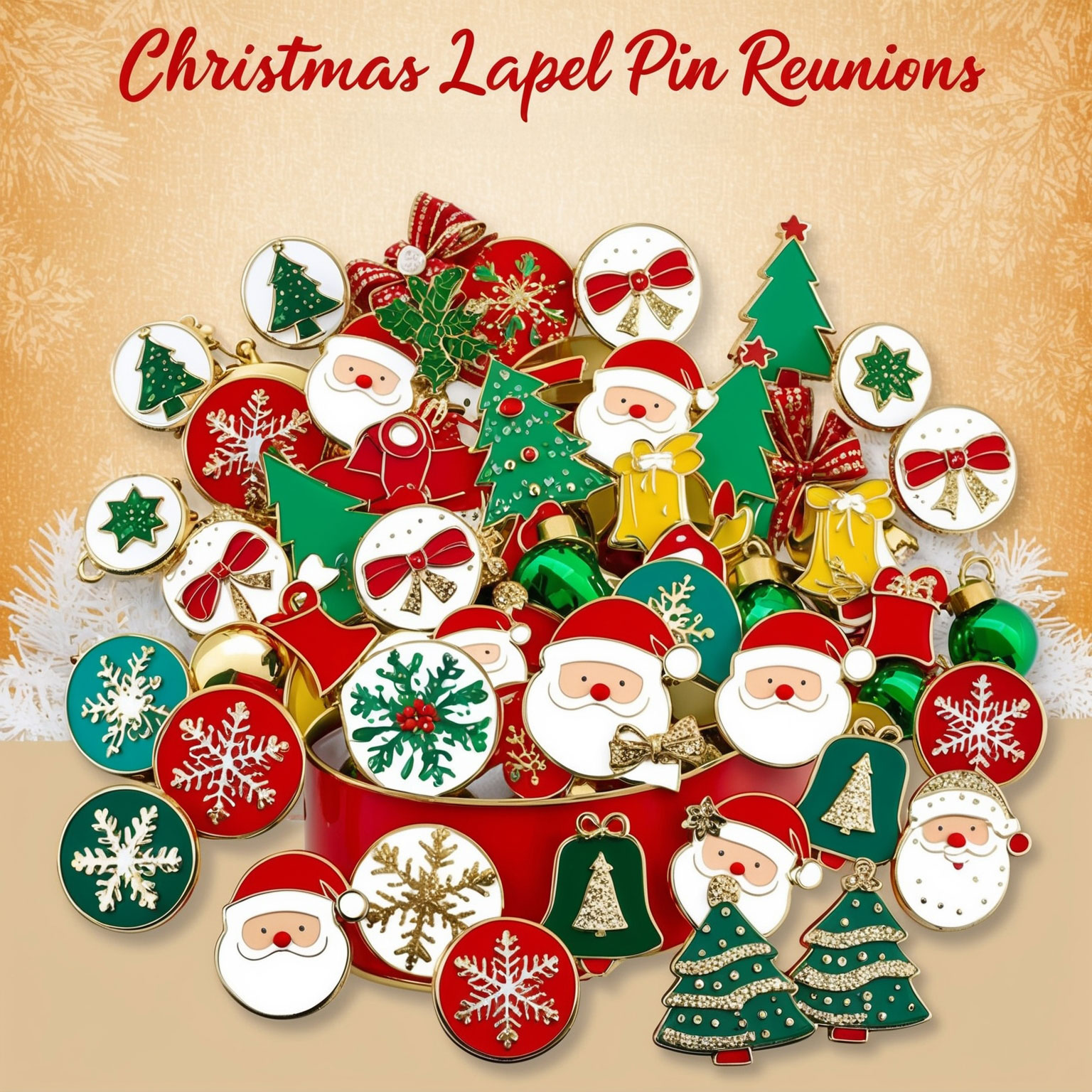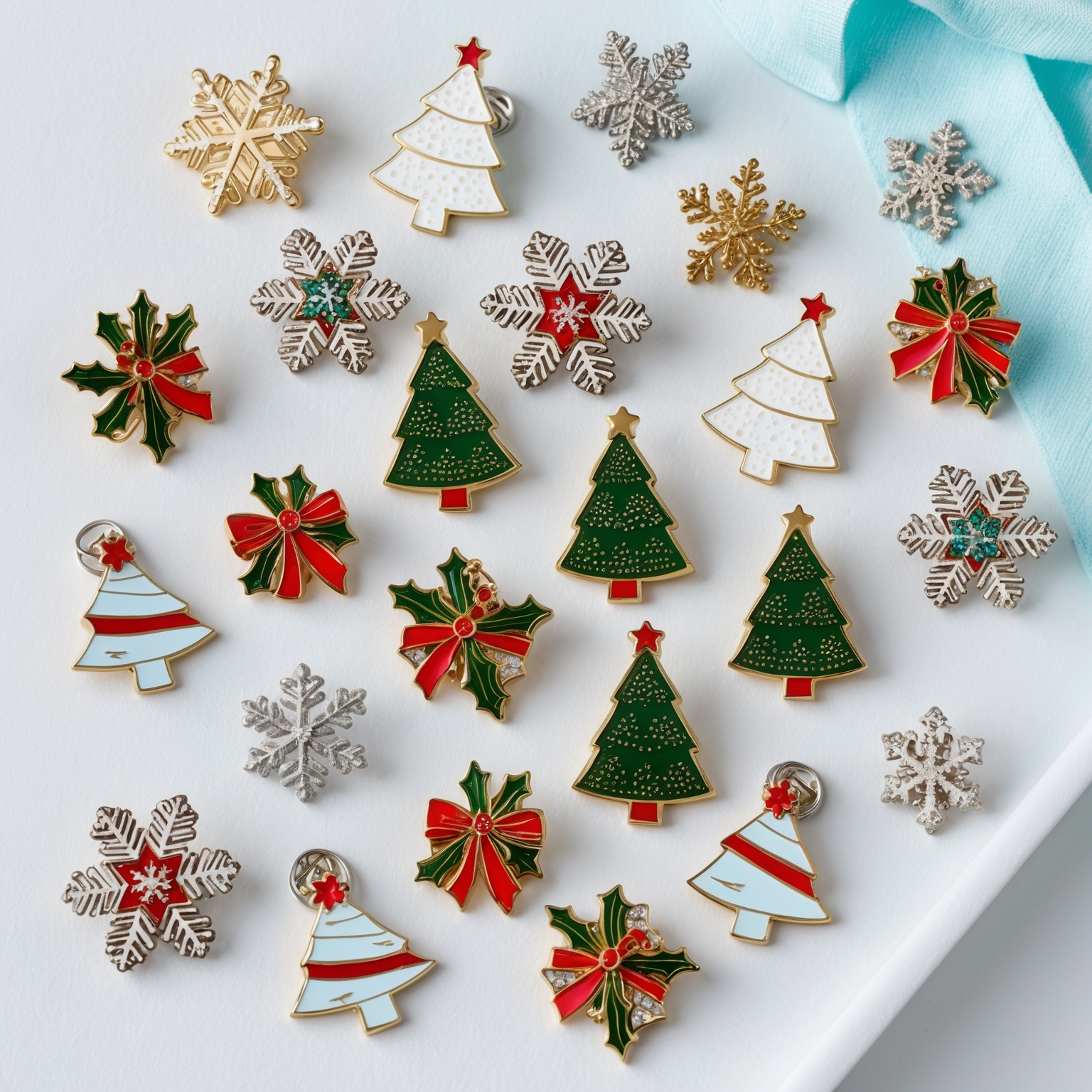Pins have long been cherished as symbols of pride, achievement, and identity. Whether worn on a lapel or traded at events, pins offer a way to express personal style, commemorate special moments, and connect with others who share similar passions. Among the various types of pins, lapel pins and trading pins are two of the most popular and widely collected. While they share some similarities, each type of pin has its own unique characteristics, history, and cultural significance.
In this comprehensive guide, we will explore the differences and similarities between lapel pins and trading pins, providing collectors and enthusiasts with valuable insights into these two distinct types of pins. From their origins and uses to their design elements and collector culture, this guide will help you understand what makes each type of pin special and how to build a collection that reflects your interests.
The Origins of Lapel and Trading Pins
The History of Lapel Pins
Lapel pins have a long and storied history, dating back to the late 19th and early 20th centuries. Originally, lapel pins were used primarily as badges of honor, rank, or affiliation in military, fraternal, and governmental organizations. These early pins were often simple in design, featuring symbols or emblems that signified membership or achievements. For example, military lapel pins were worn to denote rank or participation in specific campaigns, while fraternal organizations used lapel pins to indicate membership and status.
As lapel pins became more widespread, they began to be used in a variety of contexts beyond the military and fraternal organizations. By the mid-20th century, lapel pins had become popular as promotional items, souvenirs, and fashion accessories. Companies, political campaigns, and social movements began using lapel pins to promote their brands, causes, or messages, leading to a proliferation of designs and styles.
Today, lapel pins are worn for a wide range of purposes, from professional attire to casual wear, and they continue to serve as symbols of pride, identity, and affiliation. Collectors are drawn to lapel pins for their historical significance, artistic value, and the stories they tell.
The History of Trading Pins
Trading pins, on the other hand, have their roots in the world of sports and fan culture. The tradition of trading pins dates back to the early 20th century, with one of the earliest instances occurring at the Olympic Games. As early as the 1906 Intercalated Games in Athens, athletes, coaches, and officials began exchanging small lapel pins featuring the flags or emblems of their respective countries. This practice quickly became a tradition, with participants using pins to establish connections and foster goodwill among athletes from different nations.
The popularity of trading pins spread to other sports, particularly baseball, where Little League teams began creating custom pins to represent their hometowns or regions. These pins were traded among players, coaches, and families during the Little League World Series, helping to build camaraderie and sportsmanship among young athletes.
Over time, trading pins expanded beyond the world of sports and into popular culture, with organizations, events, and fan communities embracing the practice. Disney, for example, introduced its own line of trading pins in the late 1990s, allowing guests at its theme parks to collect and trade pins featuring beloved characters, attractions, and events. Today, trading pins are a ubiquitous part of fan culture, with collectors seeking out pins from a wide range of interests, including movies, TV shows, comic books, and more.
Differences Between Lapel Pins and Trading Pins
Purpose and Use
One of the key differences between lapel pins and trading pins lies in their purpose and use.
- Lapel Pins: Lapel pins are typically worn as a symbol of affiliation, achievement, or identity. They are often used in formal or professional settings, such as business meetings, conferences, or ceremonies, where they serve as a subtle way to display one’s association with a particular organization, cause, or brand. Lapel pins are also popular as fashion accessories, adding a touch of personal style to an outfit.
- Trading Pins: Trading pins, on the other hand, are designed specifically for trading and collecting. They are often associated with sports teams, events, or fan communities and are exchanged among participants as a way to build connections and commemorate shared experiences. Trading pins are typically more playful and colorful than lapel pins, reflecting the fun and social nature of pin trading.
Design and Aesthetic
Another important difference between lapel pins and trading pins is their design and aesthetic.
- Lapel Pins: Lapel pins are generally smaller and more understated in design, with a focus on elegance and simplicity. They often feature symbols, logos, or emblems that are meaningful to the wearer, such as a company logo, a national flag, or a military insignia. The design of lapel pins is usually more refined, with a limited color palette and a polished finish, making them suitable for formal or professional wear.
- Trading Pins: Trading pins, by contrast, are often larger and more vibrant in design, with a focus on creativity and fun. They frequently feature bold colors, intricate details, and playful imagery, such as team mascots, characters, or event logos. Trading pins may also incorporate special features like glitter, glow-in-the-dark elements, or moving parts, adding to their visual appeal and collectibility.
Production and Materials
The production methods and materials used for lapel pins and trading pins also differ, reflecting their distinct purposes and design styles.
- Lapel Pins: Lapel pins are typically made using high-quality materials such as brass, zinc alloy, or iron, and they often feature finishes like gold, silver, or enamel. The production process for lapel pins may involve die-striking, die-casting, or stamping, resulting in a polished and durable final product. Hard enamel and soft enamel are common techniques used to add color and detail to lapel pins.
- Trading Pins: Trading pins are often made using similar materials and production techniques as lapel pins, but they may also incorporate additional elements like PVC (polyvinyl chloride) for a softer, more flexible finish. Trading pins are typically produced in larger quantities to accommodate the demand for trading, and they may include features like 3D molding, cut-outs, or epoxy coatings to enhance their appearance and durability.
Size and Shape
The size and shape of lapel pins and trading pins can vary, but there are some general trends that distinguish the two types.
- Lapel Pins: Lapel pins are usually smaller in size, ranging from 0.75 to 1.5 inches in diameter. Their shape is often circular, rectangular, or square, with a focus on clean lines and symmetry. The smaller size and simple shape of lapel pins make them easy to wear on a lapel, collar, or hat without being overly conspicuous.
- Trading Pins: Trading pins are often larger, typically ranging from 1.5 to 3 inches in diameter, and they come in a wide variety of shapes, including custom shapes that follow the contours of the design. The larger size and custom shapes of trading pins allow for more detailed designs and make them more visually striking, which is important for trading and collecting.
Functionality and Collectibility
The functionality and collectibility of lapel pins and trading pins are also key differences that appeal to different types of collectors and enthusiasts.
- Lapel Pins: Lapel pins are often valued for their historical significance, elegance, and association with specific organizations or events. Collectors of lapel pins may focus on acquiring pins from a particular organization, era, or theme, such as military pins, political campaign pins, or corporate logo pins. The functionality of lapel pins as wearable accessories also adds to their appeal, as they can be worn to express affiliation or commemorate achievements.
- Trading Pins: Trading pins are primarily valued for their collectibility and the social aspect of trading. Collectors of trading pins often seek out pins from specific events, teams, or franchises, and they may participate in trading events or online communities to expand their collections. The fun and interactive nature of trading pins make them particularly appealing to collectors who enjoy the thrill of the hunt and the connections made through trading.
Similarities Between Lapel Pins and Trading Pins
Artistic Expression
Despite their differences, lapel pins and trading pins share a common thread of artistic expression. Both types of pins offer a canvas for creativity, allowing designers to convey messages, tell stories, and capture the essence of an organization, event, or fandom. Whether through the use of color, imagery, or symbolism, lapel pins and trading pins both serve as miniature works of art that reflect the values and interests of those who wear and collect them.
Personalization and Customization
Another similarity between lapel pins and trading pins is the potential for personalization and customization. Both types of pins can be custom-designed to suit the specific needs and preferences of the wearer or collector. For example, a company might create custom lapel pins featuring its logo for employees to wear at corporate events, while a sports team might design custom trading pins for players to exchange at a tournament. The ability to create personalized and unique designs adds to the appeal of both lapel pins and trading pins.
Collecting and Displaying
Collecting and displaying pins is a common practice among enthusiasts of both lapel pins and trading pins. Collectors often take pride in building a collection that reflects their interests, achievements, and affiliations, and they may display their pins in various ways, such as on pinboards, in shadow boxes, or in albums. The process of collecting pins, whether lapel or trading pins, is a rewarding hobby that offers a sense of accomplishment and a tangible connection to one’s passions.
Cultural Significance
Both lapel pins and trading pins hold cultural significance, serving as symbols of identity, community, and shared experiences. Lapel pins, with their roots in military and organizational traditions, often carry historical and cultural weight, representing the values and achievements of the wearer. Trading pins, on the other hand, are deeply embedded in fan culture and sports traditions, symbolizing the camaraderie and excitement of participating in events and communities. In both cases, pins serve as meaningful artifacts that connect individuals to larger cultural narratives.
Tips for Collectors: Building a Collection of Lapel and Trading Pins
1. Define Your Focus
When building a collection of lapel pins or trading pins, it’s important to define your focus. Consider what themes, organizations, or events are most meaningful to you and build your collection around those interests. For example, you might focus on collecting lapel pins from a particular era or organization, or you might collect trading pins from a specific sport or fan community. Having a clear focus will help you stay organized and make your collection more cohesive.
2. Research and Learn
To become a knowledgeable collector, take the time to research and learn about the history, significance, and production methods of lapel pins and trading pins. Understanding the context behind each pin will enhance your appreciation for your collection and help you make informed decisions when acquiring new pieces. There are many resources available, including books, online articles, forums, and collector communities, that can provide valuable insights into the world of pins.
3. Attend Events and Join Communities
One of the best ways to expand your collection and connect with other enthusiasts is to attend pin trading events and join online communities. These platforms offer opportunities to meet other collectors, trade pins, and learn more about the hobby. Whether it’s a local event, a fan convention, or an online forum, participating in the pin trading community will enhance your collecting experience and open up new opportunities to acquire unique and rare pins.
4. Protect and Display Your Collection
Properly storing and displaying your pins is essential for preserving their condition and showcasing your collection. Consider using pinboards, display cases, or albums to keep your pins organized and secure. When displaying your pins, think about how you want to arrange them—by theme, color, or event—and choose a method that highlights the beauty and significance of each pin. Taking care of your collection will ensure that your pins remain in excellent condition for years to come.
5. Stay Informed About New Releases
To keep your collection up-to-date and relevant, stay informed about new lapel pin and trading pin releases. Follow the brands, organizations, and events that produce the pins you’re interested in, and keep an eye out for announcements about limited-edition pins, special collaborations, or new designs. Being aware of new releases will allow you to stay ahead of the curve and add exciting new pieces to your collection.
6. Be Patient and Enjoy the Journey
Collecting lapel pins and trading pins is a long-term hobby that requires patience and dedication. Don’t feel pressured to acquire every pin at once—take your time and enjoy the process of building your collection. Each new pin is a piece of a larger puzzle that reflects your interests, experiences, and connections. The journey of collecting is as rewarding as the collection itself, so savor each discovery and the memories that come with it.
Conclusion: Celebrating the Art and Culture of Pins
Lapel pins and trading pins are more than just small pieces of metal—they are symbols of identity, connection, and cultural significance. Whether you’re drawn to the elegance and history of lapel pins or the creativity and social interaction of trading pins, both types of pins offer a unique and rewarding collecting experience.
By understanding the differences and similarities between lapel pins and trading pins, you can make informed decisions about your collection and appreciate the artistry and meaning behind each pin. Whether you’re a seasoned collector or a newcomer to the hobby, the world of pins offers endless opportunities for discovery, creativity, and connection.
As you build your collection, remember that each pin tells a story—whether it’s a symbol of personal achievement, a memento of a special event, or a token of camaraderie shared with others. By celebrating the art and culture of pins, you’re not only collecting objects but also preserving memories and participating in a rich tradition that spans generations and communities.
If you are interested in some custom lapel pins, feel free to contact us at 1-855-471-6752 or fill out one of our FREE QUOTE FORMS.



